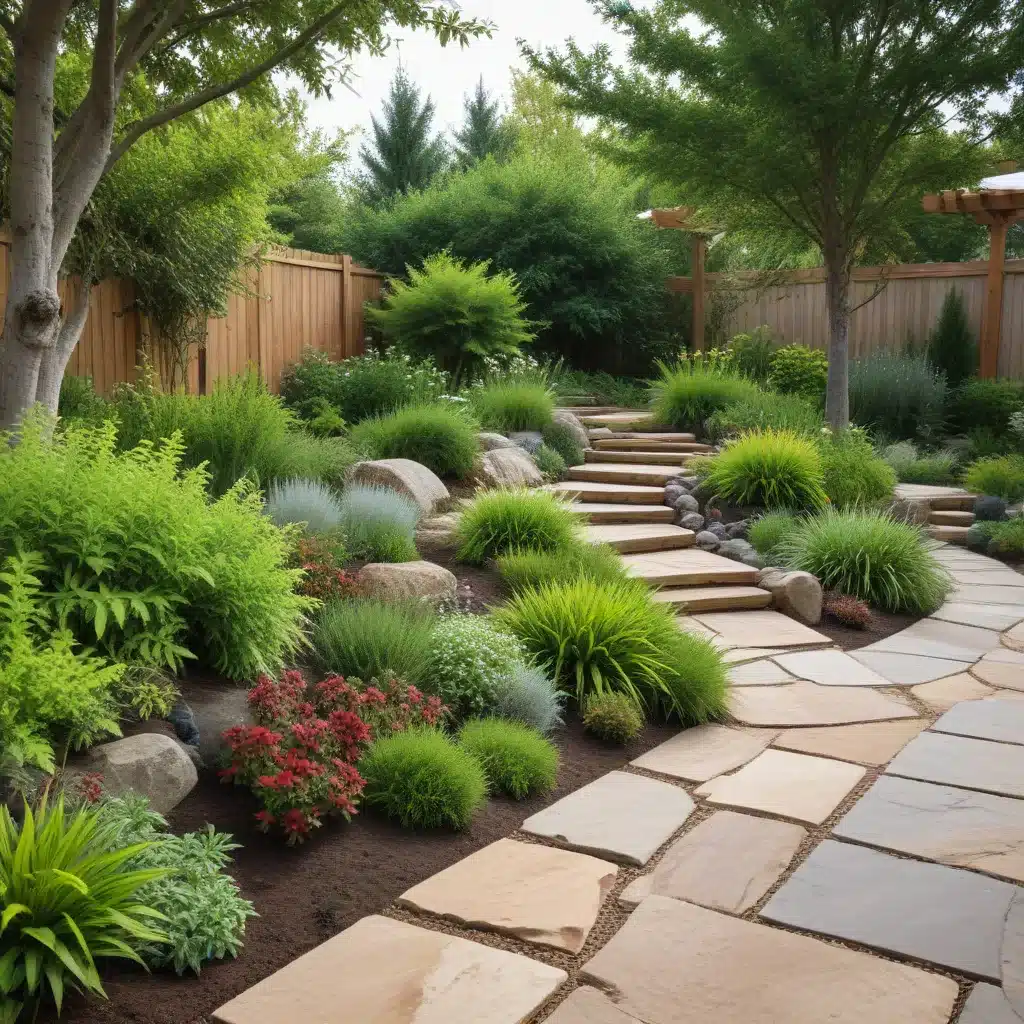
Sustainable Landscaping Upgrades: Eco-Friendly Outdoor Renovations
As an experienced home improvement consultant writing for Reluctant Renovator, I’m thrilled to share insights on sustainable landscaping upgrades that can transform your outdoor spaces into eco-friendly oases. Whether you’re seeking budget-friendly projects, deciding between DIY and professional help, or aiming for family-friendly designs, this article will explore the latest trends, practical tips, and time-saving hacks to help you create a green haven that aligns with your renovation goals.
Water-Wise Landscaping
One of the cornerstones of sustainable landscaping is water conservation. In regions like Atlanta, where water scarcity is a growing concern, implementing water-wise landscaping strategies is essential. Start by carefully selecting native plants that are adapted to the local climate and require minimal watering. Native species not only thrive with less maintenance but also promote biodiversity by providing essential resources for local wildlife.
Drought-tolerant gardening techniques can further enhance your landscape’s eco-friendly credentials. Incorporate plants like agave, lantana, and California poppy that are naturally suited to drier conditions. These hardy species can withstand periods of low rainfall, reducing the need for frequent irrigation. Pair them with efficient irrigation systems, such as drip lines or smart controllers, to ensure every drop of water is used effectively.
Renewable Energy Integration
Harnessing the power of renewable energy is a game-changer when it comes to sustainable landscaping. Solar-powered lighting is a simple, cost-effective upgrade that can illuminate your outdoor spaces while minimizing energy consumption. These self-sufficient fixtures harness the sun’s energy, eliminating the need for grid-tied electricity and reducing your carbon footprint.
For a more ambitious project, consider integrating wind-driven water features like decorative fountains or ponds. The gentle motion of these elements is powered by the wind, providing a soothing ambiance while reducing your reliance on conventional energy sources. Alternatively, explore the option of geothermal heating and cooling systems, which leverage the earth’s natural temperature to regulate the climate in your outdoor living areas.
Eco-Friendly Hardscaping
The materials you choose for your landscape’s hardscaping can have a significant impact on its overall sustainability. Opt for permeable paving solutions, such as porous pavers or decomposed granite, which allow rainwater to infiltrate the soil rather than contributing to runoff and water pollution.
Incorporating recycled building materials into your hardscaping design can also boost your eco-credentials. Reclaimed wood, salvaged stone, and recycled concrete can add unique character to your landscape while reducing waste. For a natural touch, consider integrating natural stone accents like boulders or flagstone, which seamlessly blend with the surrounding environment.
Pollinator-Friendly Design
Promoting biodiversity is an integral part of sustainable landscaping. By designing your outdoor spaces to attract and support pollinators, you can contribute to the health of local ecosystems while enjoying the beauty of a thriving garden.
Incorporate butterfly-attracting flora, such as milkweed, coneflowers, and lantana, which provide nectar and host plants for these essential insects. Create bird-nurturing habitats by including native shrubs, trees, and water sources that cater to the needs of feathered friends. Additionally, consider planting bee-friendly vegetation, like lavender, rosemary, and clover, to support the vital role of pollinators in your landscape.
Enhancing Outdoor Living
Sustainable landscaping extends beyond just the plants and hardscaping; it also encompasses the structures and amenities that make your outdoor living space truly eco-friendly and enjoyable.
Sustainable Structures
When it comes to sustainable structures, prioritize materials that have a minimal environmental impact. Reclaimed wood furniture, for instance, not only adds rustic charm but also reduces the demand for new timber. Explore the installation of green roof systems, which incorporate vegetation to provide natural insulation, reduce stormwater runoff, and enhance biodiversity.
For a comprehensive approach to waste management, incorporate composting facilities into your landscape design. These systems can transform organic matter into nutrient-rich soil amendments, reducing the amount of waste sent to landfills.
Waste Reduction Strategies
Sustainable landscaping also involves thoughtful strategies to minimize waste. Composting and mulching are excellent ways to repurpose garden trimmings and fallen leaves, returning valuable nutrients to the soil. Rainwater harvesting systems capture and store precipitation for irrigation, reducing the demand on municipal water supplies.
When it comes to responsible waste disposal, provide recycling stations throughout your outdoor living areas to encourage guests to sort and dispose of materials properly. By implementing these waste reduction strategies, you can reinforce your commitment to eco-friendliness and set an example for your community.
Biodiversity Promotion
Beyond the visual appeal of your landscape, sustainable upgrades can also have a profound impact on local ecosystems. Habitat restoration efforts, such as planting native species and creating shelters for wildlife, can help support threatened or endangered populations.
Establish pollinator corridors by strategically connecting your garden with neighboring green spaces, providing safe passage and essential resources for bees, butterflies, and other pollinators. Additionally, consider incorporating ecosystem preservation measures, such as protecting mature trees, maintaining healthy soil, and minimizing the use of harmful pesticides, to safeguard the delicate balance of your outdoor environment.
As you embark on your sustainable landscaping journey, remember that every eco-friendly upgrade, no matter how small, can contribute to a greener, more resilient outdoor oasis. By leveraging the latest trends, innovative materials, and thoughtful design strategies, you can create a landscape that not only enhances your property’s beauty but also aligns with your environmental values and delivers long-lasting benefits for your family and the planet.
For more inspiration and guidance on eco-friendly home renovations, be sure to visit Reluctant Renovator. Their wealth of resources can help you navigate the world of sustainable upgrades and transform your outdoor spaces into a true reflection of your commitment to environmental stewardship.



